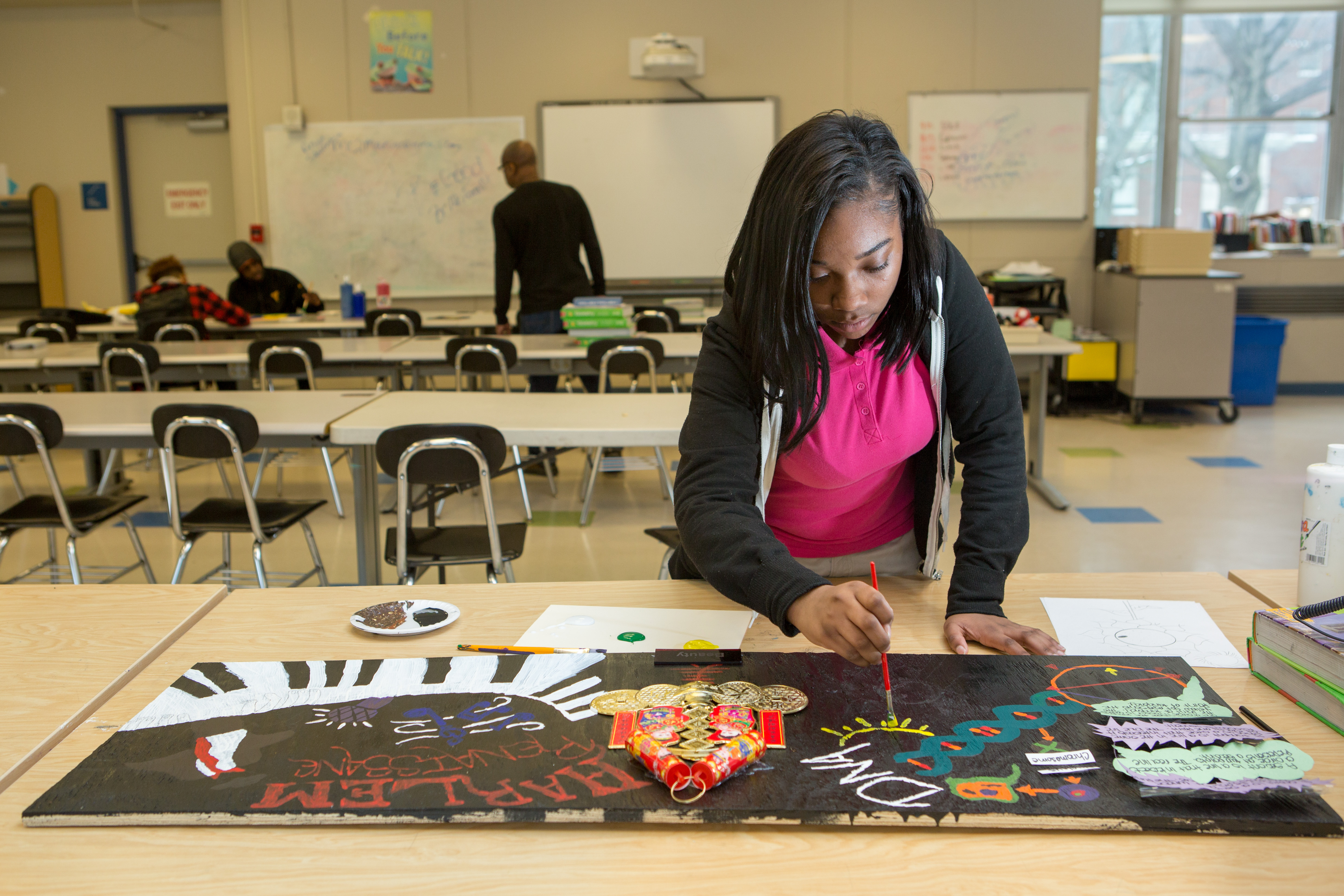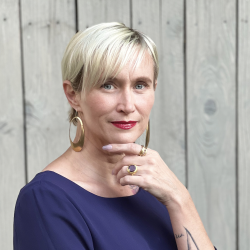
One of my favorite things about being a member of the PBLWorks National Faculty is traveling the country to see Project Based Learning in action. Rural to urban, giant comprehensive high schools to pre-Kindergarten classrooms - transformative learning is happening in every setting and in every corner of the country.
From these glimpses into so many schools, I’ve learned that Project Based Learning doesn’t look just one way. There are as many variations as there are students in a school. At PBLWorks, PBL is our North Star because we know it moves us toward our vision which is “for all students, especially Black and Brown students, to engage in high quality Project Based Learning to deepen learning and achieve success in college, career, and life.” Our Gold Standard Design Elements and Teaching Practices, working in tandem with our Equity Levers to guide teachers and leaders in implementing high-quality PBL. With these navigational tools, and an abiding knowledge of their students and community, a school makes the methodology their own.
As much as I value seeing the breadth of PBL, I very rarely get to work in my own backyard - Tacoma, Washington - an unpretentious port city south of Seattle. Even though I’m usually getting on an airplane to work with teachers, when I think of “doing school differently” I think of the local school that I was lucky enough to teach in. This small school is where I experienced my first PBL 101 workshop, and the place that taught me what it means to let a vision be the beacon for every decision, every interaction, every relationship, every day.
The Technology Access Foundation (TAF) was founded by Trish Millines Dziko and her wife, Jill Hull Dziko, back in 1996 to bring tech skills and access to BIPOC students in the South Seattle/Tacoma area. What grew from that successful endeavor was TAF Academy, “the only public school in Washington State to be co-managed by a nonprofit and a school district.” (TAF website)
The success of TAF Academy led to the STEMbyTAF learning model. Using the STEMbyTAF learning model, “students receive the tools, resources, supportive network, and 21st-century STEM education to achieve academic success. Even more, [the] model eliminates race-based and socioeconomic disparity so all students can thrive in anti-racist classrooms led by educators who reflect, value, and center the learning around their identities and cultures.” Now, TAF co-manages two public neighborhood schools and is a leader in school transformation work, teacher preparation and professional development.
Along with using interdisciplinary PBL as their primary methodology, TAF Academy, now known as TAF@Saghalie, empowers their 500+ students to go in depth each year on a STEM investigation of their choosing, presenting their month’s long work to professionals across the region. “One of our primary goals is to enlist students as active participants in their own education, ensuring each student has the knowledge and experience to use STEM as a tool for positive social change; starting in their own community.” (TAF@Saghalie website)
After leaving the TAF Academy classroom, I’ve loved staying connected to the school, coming back to TAF@Saghalie to view and assess student work at STEM Expos. Each year the self-management, efficacy and agency students exhibit grows. It’s a time to celebrate all of the skills they gain throughout the year. I stopped by Mr. Pierce’s Humanities class just a few weeks before STEM Expo to see the projects in-process and get a better understanding of how these self-directed projects connect across disciplines.
What first struck me as I made my way around the classroom was the level of agency students possess. They were able to talk to me about their STEM Expo projects, conferring with their teammates to round out the story of their learning, add to task lists as things came up, reference their data and show me examples, all while the teacher was conducting a lesson on sentence structure to aid students in foundations of writing. This is what is possible when the project process is engrained in the culture and infrastructure of each classroom and the whole school. Students are managing their project load and using the teacher as yet another resource to get closer to answering their Driving Question.
I sidled up next to Anika and Ivy, ninth and tenth grade students who were huddled around a document on their laptop. They shared how they partnered up for STEM Expo to study the possibility of building a robot vacuum to till soil and plant seeds for people who are physically disabled. When I asked if they would be creating a proposal or blueprint for this idea and sharing it with programmers, they gave me a look that only teenagers trying to convey to adults how naive they are can give, before saying, ”We are coding for the seeding right now. We are constantly testing it to make sure our program works and we are going to build a garden bed [out of inexpensive materials] and then we will test it on the garden bed.” Silly me! These students aren’t just coming up with the idea, they’re actualizing it. Ivy added, “We had a bunch of other ideas but they were not realistic so we kept brainstorming and this is what we came up with.” I would’ve loved to eavesdrop on that initial ideation session (using IdeaBoardz) to hear what solutions these young minds devised.
Since we were sitting in their Humanities class, I wanted to know how their Driving Question related to the Humanities. What did gardening Roombas have to do with English and Social Studies? They explained that through the study of human rights, the needs of people with disabilities, and the history of the Americans with Disabilities Act, they had a richer understanding of the need and impact their work could have, thereby making their product more valuable.
Luis and Caydon, another duo in Mr. Pierce’s Humanities class, are collecting data and testing their hypothesis to answer the Driving Question: With the popularity of Chat GPT, what is the future of academic integrity? Caydon summed up the study, “Recently, a ton of AI Chatbots have been popping up all over the place. These bots are getting increasingly intelligent and more realistic. Our project is testing whether someone can differentiate an AI written essay from one written by a human.” What are they finding out? Students and teachers get it right about 50% of the time, with college counselors having the highest rate of accuracy. When I asked if they thought AI Chatbots were just a phase, Luis said, “I believe we are around the start of this massive explosion of AI soon to come. In November the chat GPT was released but since then just so many more products have come out in just a few months. Colleges are updating their guidelines because so many students are using chat GPT to do classwork for them. There’s also programmers who are using it to optimize code, graphic designers are using it for reference, but with any good thing there’s always a bad consequence that comes with it, that’s why we're talking about academic integrity.”
Malik and Neil investigated whether students perform better on mathematics tests, with or without noise in the room. “I proved our hypothesis wrong. I thought it was going to be better with quiet because it was a pretty hard test, but it was the same with and without the noise,” reported Malik. Working independently is a choice once students reach high school and has proven to be the preference for some students. Daiya, a ninth grade student, is studying if sleeping with a lava lamp in your room can actually improve the quality of sleep. Other students I spoke to are addressing how to safely recycle outdated computers and are redesigning cargo ships so they never get stuck in a canal again. I could give example after example of STEM Expo projects where students are partnering with professionals to solve community (and global) problems, and the innovation is all student-led.
Spending time in Mr. Pierce’s class, what I heard repeatedly from students who had been at the school for seven months to those who had started their journey in sixth grade, was an uncanny understanding that the kind of interconnected, culturally-affirming, intellectually challenging Project Based Learning they are doing is just how they “do school.” They are not aware that their school is anything special. The mission and vision of adults in the classroom, in leadership, and at TAF ensures that every aspect of doing school is saturated with what they believe.
When the big day arrived, you’d expect to see nervous students (and the sixth graders certainly were) but for the most part students were prepared and excited. There were 100+ community partners and experts present at the STEM Expo event to support students as they shared the culmination of their work. The partners and experts asked them the hard questions, and pushed their thinking even further. As Neil, the student studying noise in the Math classroom, said, “It’s stressful, but in a good way.” When I asked what happens after STEM Expo, Ivy, of the gardening Roomba group, said, “we have a party!”
This kind of high-quality PBL is happening just a few miles from my home. TAF is helping schools in my sightline do things differently. What’s happening in YOUR neighborhood?

